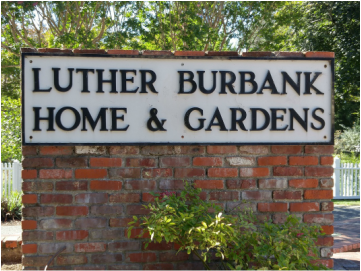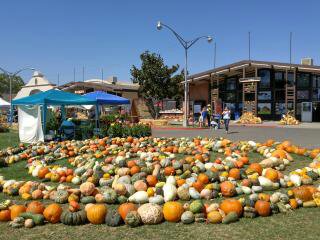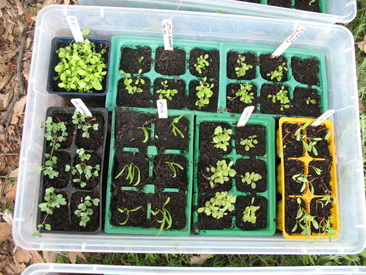
Here’s a taste of what I enjoyed.
|
|
 While attending the Heirloom Expo in Santa Rosa, I made a point of also visiting The Source of Great Historic Breeding, Luther Burbank's Home and Gardens. This is where so many of our prized plants today come from - they literally were born here. I was thrilled to trod the very same pathways and visit the actual greenhouse that germinated the Russet Burbank Potato, Shasta Daisy, and Santa Rosa Plum among a billion others! Excellent and informative signage is in the garden, and docent-led tours are offered hourly and well worth the minimal expense. Here’s a taste of what I enjoyed.
1 Comment
 What a grand event, the 2015 National Heirloom Exposition this past week in Santa Rosa, sponsored by Baker Creek Heirloom Seeds! I joined many LA-area gardening folks, reconnected with further-afield luminaries in the field, thrilled at the humongous piles of squashes and other locally grown heirloom veggies and fruits, and learned lots. No matter how much experience you have, there’s always more to learn, perspectives to consider, people to meet, and enthusiasms to share. Years ago, I was traveling through Petaluma – touted as the “Chicken Capital of the World” - a half-hour south of Santa Rosa, and came upon an impressive building that looked like a 1930s bank, but its main window was labeled “Seed Bank.” Of course that meant I had to park and see what was inside -- rows upon rows of seed racks, magazines, tools, and other “gardenyania.” I’d been aware of Baker Creek Seeds as an heirloom seed source but had discounted the company due to its Midwest location – not an ideal choice for our Western climates. When I broached this with a staff person, she informed me that the company trials its seed in nationally widespread locations, and that the company had determined to offer a Northern California retail location because more than 80% of its online purchases came from the area. What a surprise! Now I could indeed allow myself to purchase Baker Creek seed! This year, since I’d retired from the University, I was intent on attending the Heirloom Expo to experience for myself the enthusiastic reports from years past about the event. Definitely worth doing! The 100+ temperatures over the three days of the festival meant I spent more time listening to lectures that I initially hadn’t considered – just to be able to stay indoors – but I ended up learning more than I’d expected and from new resources. Here are some of the tidbits:
 Now that I’ve finally gotten somewhat acclimated to the summer heat and am still enjoying tomatoes, the calendar tells me that it’s time to start thinking about moving on in the garden. Really, the garden has been at somewhat of a standstill for more than two months, since I let the beans and squash and cucumbers run their initial courses but didn’t sow more seeds or plant more seedlings since I knew I wouldn’t want to “spend” the water to keep them thriving when the weather got really hot. I did plant another batch of Celebrity tomatoes, which I’m beginning to enjoy now. Now it’s time to think about the last chance to plant one more batch of summer veggies – in case the warm weather persists through Thanksgiving so they ripen completely – or to bet that the cooler weather will settle in, and therefore I should plant overwintering veggies. My decision – as for the same but reverse timing situation in March – is to do both, so I’m covered either way and have some sort of produce no matter what the weather does. I usually both sow seeds and plant seedlings as soon as they’re available at local nurseries. This way, I’ll get a crop from the seedlings, and then when that wanes the seed-sown batch will begin producing. In another month, I’ll sow more seed for the third wave of production. And so on through the winter. There’s always some variability in maturation, so always something harvestable without being swamped with too much that must be eaten immediately. A note about seed germination and ambient air temperature. The overall range of temperature that encourages seed germination is a low of 50 degrees and a high of 85 degrees. So, sowing now outside in the garden or in flats or six-packs may not result in successful germination since the air temperatures have been considerably above that, at least here inland. The solution is to begin seeds indoors where you can keep the temperature lower but still provide as much bright light and good air circulation as possible. Then, when you achieve germination of at least one-half of the seeds and the air temperature is in the low 80s or below, move the containers outdoors to a filtered-light area to acclimate and complete germination. If that area will be accessible by snails and slugs and other critters, cover the trays with spun-bonded polyester or cheesecloth or other breathable fabric. As uncomfortably hot as this time of year is, begonias relish the warmth in filtered light. I love their many variations of foliage colors, patterns, and textures – as well as their exquisite blooms – and I teach them to thrive with less water! |
Categories |
